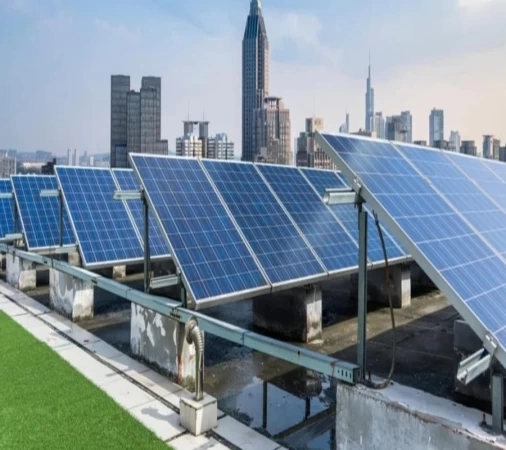
Solar panels have gained a lot of hype in that last few years as the focus on creating green energy is increasing. This hype is backed up by the excellent performance and the ROI of solar panels. As of 2021, solar power has become the fastest growing electricity source in the US, followed by wind power and fossil fuels. The US has already surpassed the 100GW mark of installed solar capacity.
If you are someone that is interested in installing solar power for your electricity needs, one of the most common concern is which solar panel is the right one and how to identify the best one. We have listed down the main specifications that one should look for when comparing solar panels.
Before we dive into the specifications, note that the solar federal tax credit will continue to be at its current value of 26% till the end of 2022. Home and business owners will be able to claim a 22% benefit in 2023.
Now, let’s move into the main specifications of solar panels that you need to look for.
Solar Panel Wattage and Energy Efficiency
The solar panel wattage is the amount of electricity output produced under the standard test conditions, which are solar cell temperature of 25 degree Celsius, solar irradiance of 1,000W per square meter, and 1.5 air mass.
The rated wattage of solar panels is a benchmark, not the actual wattage they achieve on a rooftop. This is because the actual operating conditions and the standard test conditions don’t always match. You will get maximum sunshine during the noon for a few hours, before it goes down. For areas with limited sunshine, a high rated wattage will produce more kWh per year.
Theefficiency of solar panelsis how much sunlight gets converted into electricity. For instance, consider a solar power with an area of 1.6 meter square and solar irradiation is 1,000W per meter square. Thus the solar panel will get 1,600W of sunlight. If the electricity output is 355W under these conditions, the solar panel is 22% efficient. A typical efficiency value of 17% can be achieved with the best polycrystalline panels, while the best monocrystalline panels achieve efficiency above 22%.
Solar Panel Warranties
There are two types of warranties that are offered by solar panel manufacturers: product warranty and power output warranty. Each warranty has a different coverage period. Having a warranty is beneficial as it ensures a free replacement if any of the panels fails before the warranty period ends. It is important to keep in mind that the warranty may be voided if the solar panels are not professionally installed.
Solar Power Temperature Coefficient
The electricity output of solar cells decreases as the temperature increases. Depending on the brand and the model, this effect can vary. Temperature coefficient is measured in percentage loss per degree Celsius. Look for the temperature coefficient when you look for solar panels. Keep a note that the mentioned temperature coefficient is calculated in standard test conditions.
To understand it better, consider a solar panel with temperature coefficient of -0.50% per degree Celsius. This could result in loss of 10% productivity with a temperature rise of 20 degree Celsius.
BONUS: How Space Affects Solar Panel Efficiency
Solar panels are manufactured in different sizes, the 60-cell and 72-cell modules being the most widely used. The 60-cell panels are typically described as residential, while the 72-cell panels are described as commercial. The space required for the solar panels is impacted by the type of photovoltaic materials used. This in turn affects the efficiency. Higher efficiency solar panels condense more Watts of capacity per square foot, which reduces the area required.
For maximizing electricity production with the space available, monocrystalline solar panels give the highest output per square foot. If space is not a limitation, several other options can be compared to identify the one that offer the highest ROI. In cities like New York City, using monocrystalline solar panels is often recommended, since they are subject to Local Law 97.
Final Words
There are many high quality solar brands in the market. However, you should focus on certain performance metrics to identify which would be the most optimal fit for you. For instance, solar panels with a high wattage and efficiency will work best if you have limited space. A lower temperature coefficient solar panel would be ideal for areas with hot weather.
When it comes to warranties, look for at least 10-year product warranty and a 25-year performance warranty, as this is considered the industry standard.